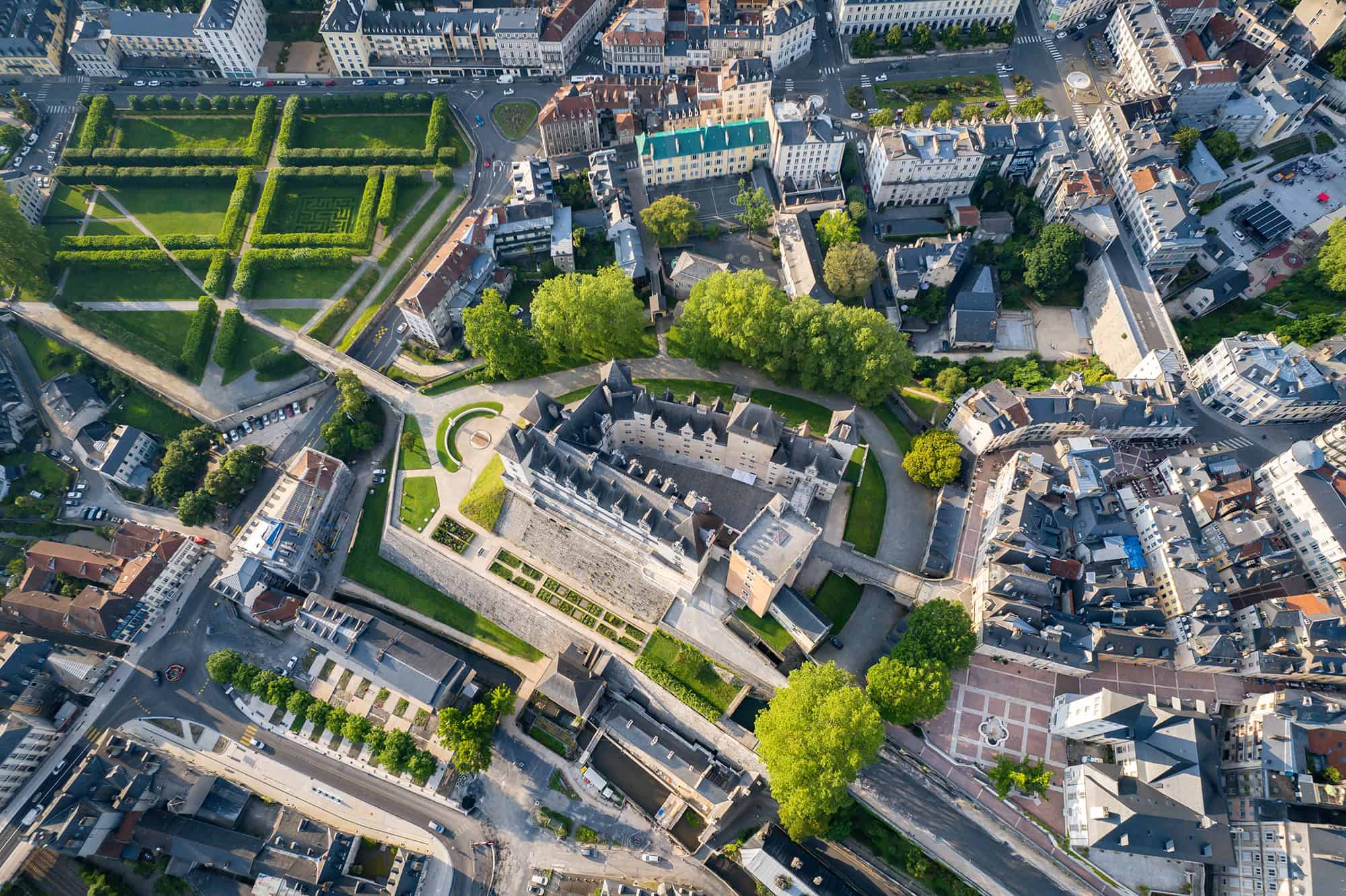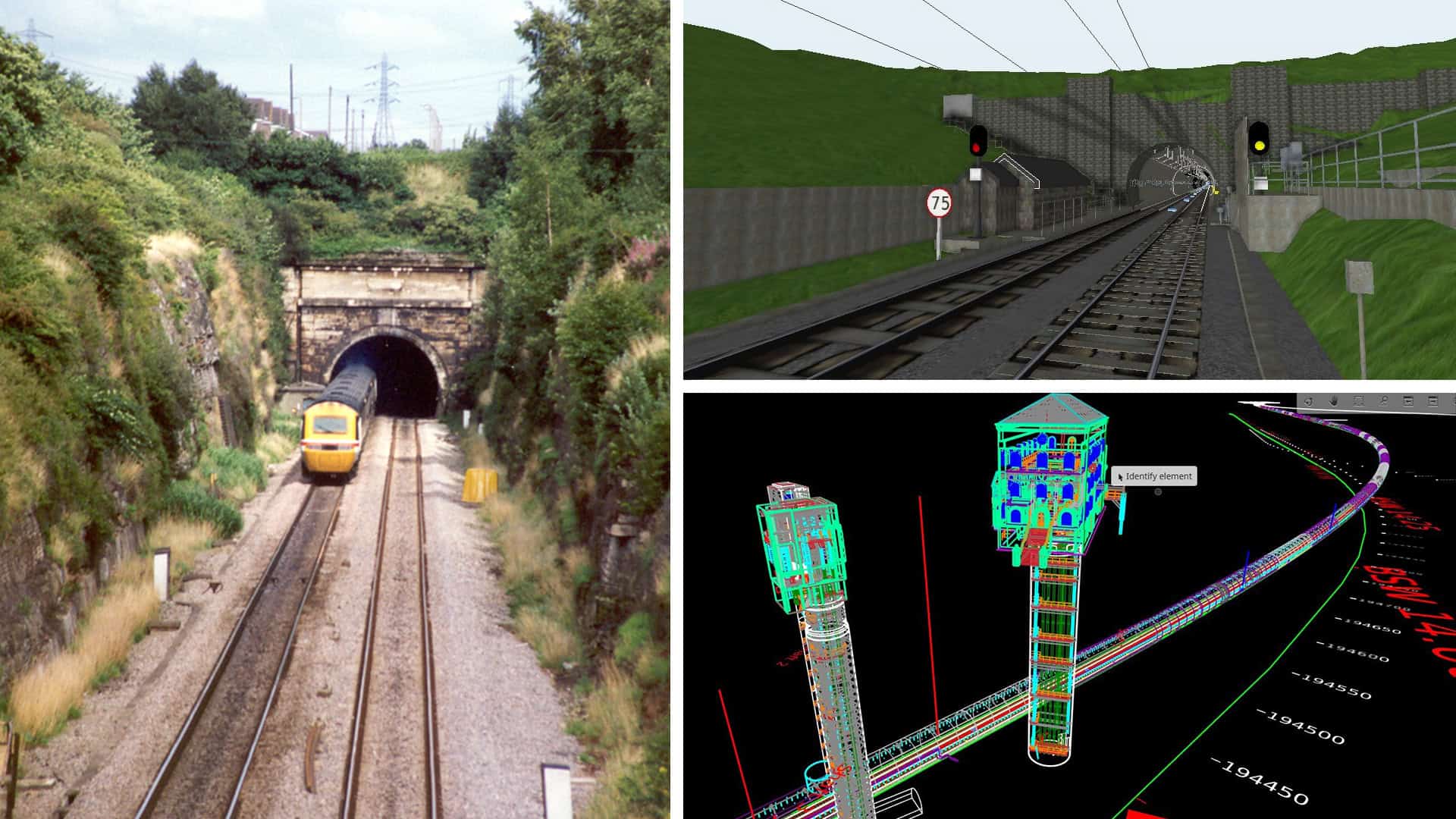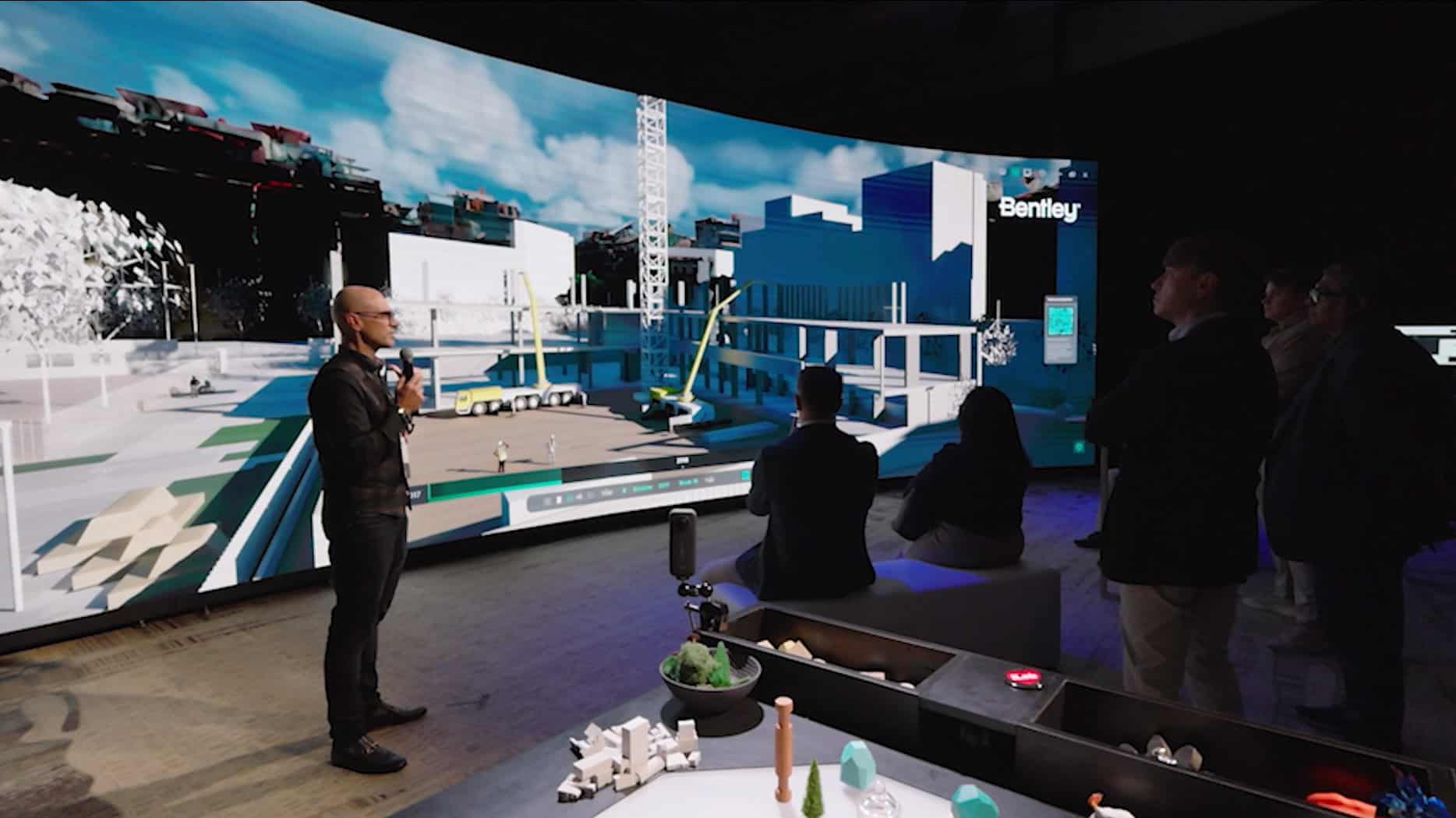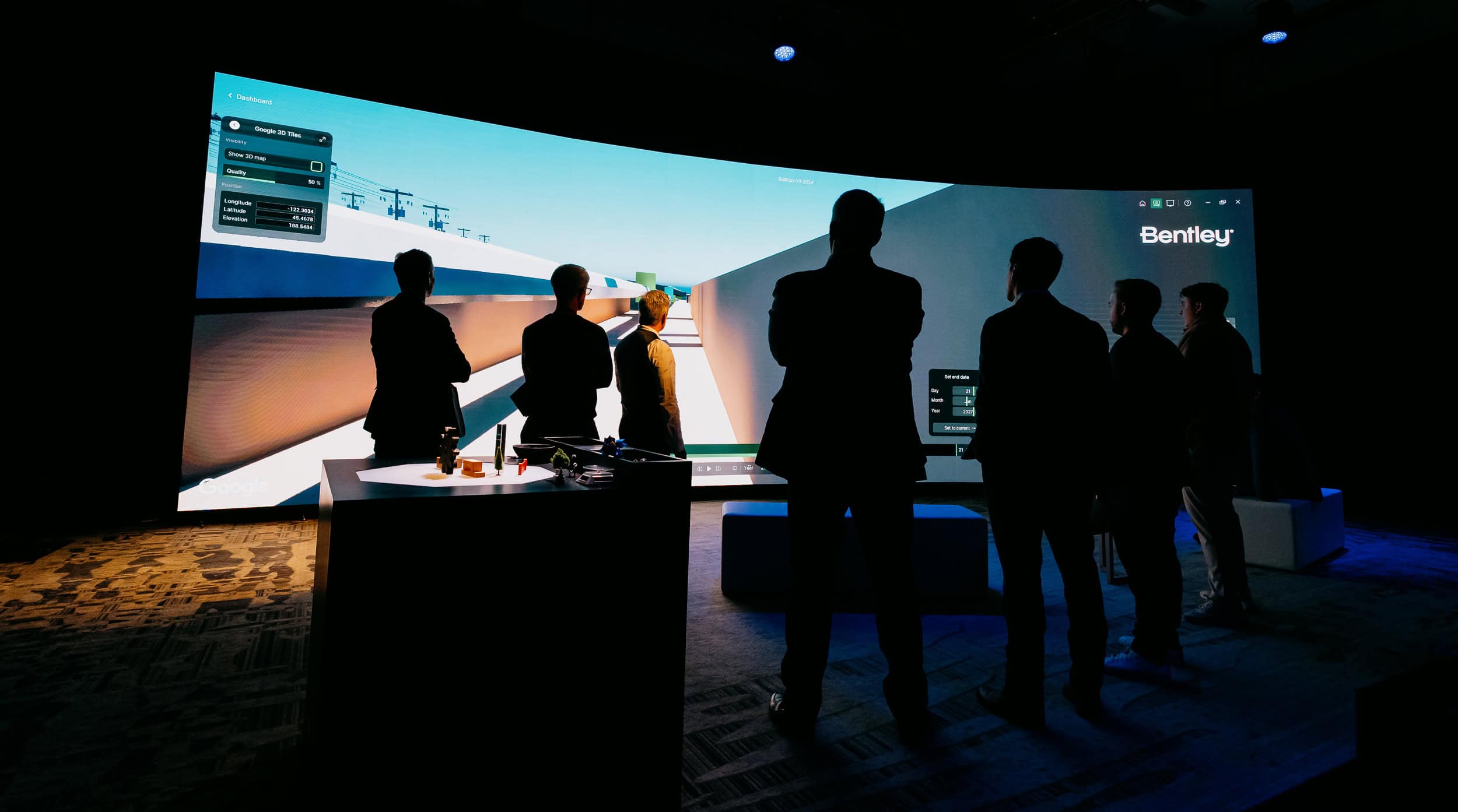With hundreds of bridges crossing valleys, railroads and the three major rivers that meet downtown, Pittsburgh embodies its nickname as the City of Bridges. These bridges are more than infrastructure—they’re proud symbols of connection and community. That pride was on full display when the Andy Warhol Bridge became the centerpiece of Knit the Bridge, a 2013 public art project that blanketed the bridge with nearly 600 knitted and crocheted panels in a colorful tribute to the city’s engineering legacy.
For Emily Zhang, who came to Pittsburgh to study computational mathematics at Carnegie Mellon University, the city’s bridges are more than a backdrop. They sparked discussions in her classes and her interest in infrastructure. “For the first time, I started hearing about bridges and transportation systems, and how math could be used for real-world modeling,” she recalls. That shift in perspective set Zhang on the path to explore infrastructure—and the software that designs it—as a career. She’s now working on the sector’s leading edge, developing software powered by generative AI that is changing the game for civil engineers.
While Pittsburgh sparked Zhang’s interest in infrastructure, her journey to Bentley Systems, a global leader in infrastructure engineering software, began much earlier and half a world away.
 “For me, choosing the right industry was essential,” said Zhang, a participant in Bentley’s Graduate Developer Program. “What and who the software is serving is really important for me.”
“For me, choosing the right industry was essential,” said Zhang, a participant in Bentley’s Graduate Developer Program. “What and who the software is serving is really important for me.”Zhang grew up in the picturesque city of Hangzhou, China, where her love of mathematics took root early. Inspired by her trailblazing grandmother—one of Hangzhou’s first computer science teachers—Zhang was competing in Olympic math teams by middle school and excelling in STEM subjects.
But China’s test-focused high school system, and its emphasis on art and history—subjects Zhang had little affinity for—left her feeling stifled. “After half a year, I realized it just wasn’t for me,” she says. Her parents, knowing she planned to attend college in the U.S., encouraged Zhang to make the leap earlier. So after months of intensive preparation, she enrolled as a boarder at Tilton School in New Hampshire, where she thrived despite the challenges of adapting to a new language and culture. “It was a big adjustment,” Zhang admits. “I’m quite introverted, and my English wasn’t great at first. But I got to focus on math and science.”
After graduating from Tilton, Zhang attended Carnegie Mellon University, initially majoring in pure mathematics. However, surrounded by computer science enthusiasts at one of the nation’s top tech schools, she shifted her focus to computational mathematics, a field that connects mathematical theory with real-world applications.
Even then, infrastructure engineering wasn’t yet on Zhang’s radar. She explored other industries, taking internships in both quantitative finance and retail, but neither felt meaningful. The bottom line, she realized, was that she didn’t want to put her efforts and growing expertise solely into helping companies generate cash. She wanted to help make an impact. “For me, choosing the right industry was essential. I’m not just interested in developing software. What and who the software is serving is really important for me.”
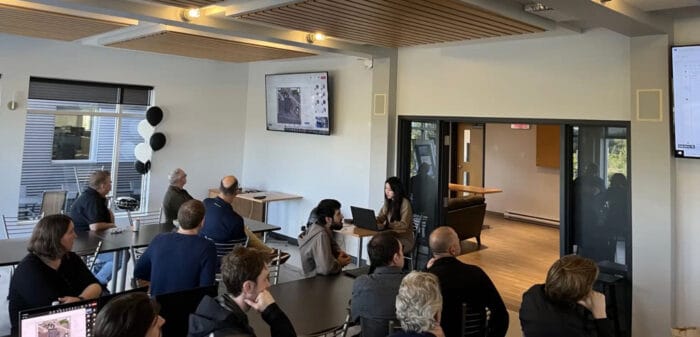 Zhang, pictured with Bentley colleagues, view an OpenSite+ presentation during a team meetup.
Zhang, pictured with Bentley colleagues, view an OpenSite+ presentation during a team meetup.Zhang’s time in Pittsburgh opened her eyes to the possibility of improving infrastructure—the essential framework of civilization. It didn’t hurt that the Pennsylvania-based Bentley had an office in Pittsburgh. Zhang reached out and was soon accepted to Bentley’s prestigious Graduate Development Program (GDP), where she would embark on four six-month rotations across the company, tailored to her skills and interests.
“Emily is so talented, she could be working at any other great company—she’d get a job in 5 minutes,” says Francois Valois, Bentley’s vice president of civil infrastructure. “Yet she decided to come and work at Bentley, and that’s because of our mission to advance infrastructure. We contribute to provide water, transportation, electricity and much more to people around the world. That makes a huge difference.” For Valois, Zhang represents the kind of talent Bentley strives to attract and nurture.
“Choose an industry where your work feels meaningful. For me, it’s not just about developing software—it’s about seeing the real-world impact of what I’m helping to create.”
Emily Zhang, Associate Software Engineer at Bentley
Zhang began her journey at Bentley on the iTwin Viewer team, where she learned how users of Bentley’s iTwin platform interact with digital twins—virtual replicas of physical infrastructure. Her next stop was the iModel Viewer Framework, where she worked on assembling and maintaining the components that keep iTwin representations functional, deepening her understanding of the platform.
Zhang’s third rotation brought her to the Civil iTwin team, where she began applying her skills to real-world scenarios. “For example, a user might have a virtual model of a bridge and want to calculate the clearance between the bottom road and the top bridge,” she said. “That team handles all the annotations and calculations for that kind of validation.” During this time, Zhang was able to work with meshes, digital representations of surfaces broken into smaller geometric shapes that allow for precise modeling and calculations of infrastructure elements.
“I actually wanted to graduate directly into the Civil iTwin team because it was such a great mix of civil and software engineering,” Zhang says. But her managers had other ideas, essentially saying: “If you liked that, wait till you get a load of this.” They offered her a final rotation with OpenSite+, Bentley’s innovative generative AI solution for site design. OpenSite+ uses artificial intelligence (AI) to help civil engineers quickly generate and optimize site designs for industrial facilities, retail centers, schools—you name it—in a fraction of the time.
When Zhang joined the team, the public launch of OpenSite+ to trusted early users was just months away, throwing her straight into the deep end. With other OpenSite+ team members from around the world, Zhang participated in what she calls an “international Bentley boot camp” in Quebec, held just a month before OpenSite+ debuted at Bentley’s Year in Infrastructure and Going Digital Awards event in October 2024. “Everyone was so focused,” she recalls. “We had sticky notes all over the walls and were finding and fixing bugs. It was the most intense and productive experience I’ve ever had.”
“Our OpenSite+ launch was a watershed moment for the company and the industry,” Valois says. “It’s the world’s first engineering product to leverage AI for a range of applications. That includes high-level co-pilot experiences and generative AI for infrastructure design. It can also automate tedious tasks that many engineers would rather not do but currently have to, such as producing detailed 2D plans.” For Zhang, joining the OpenSite+ team offered the chance to contribute to this groundbreaking product as it prepared for its debut.
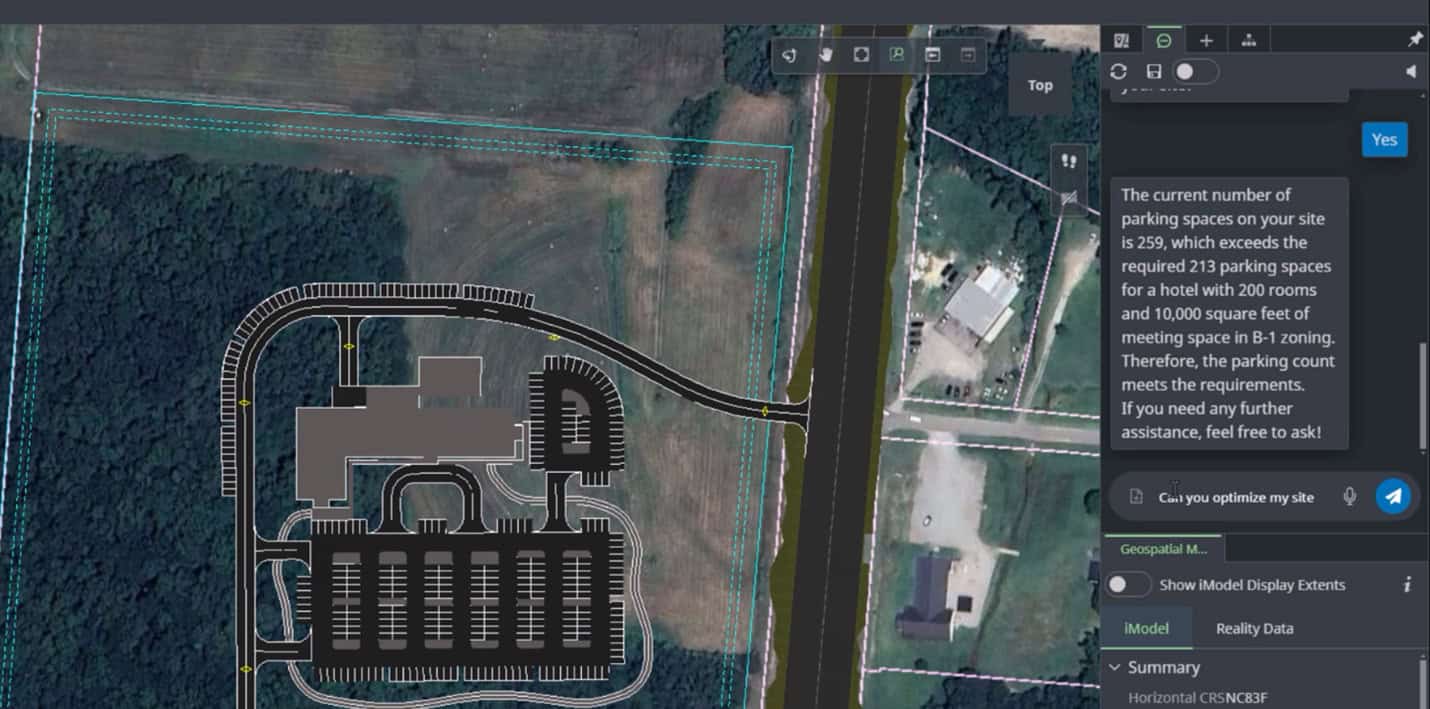 Bentley’s OpenSite+ software with copilot uses organization-specific documents and design models for quick insights and edits.
Bentley’s OpenSite+ software with copilot uses organization-specific documents and design models for quick insights and edits.Zhang is now focused on her own aspect of OpenSite+, modeling how potential site designs handle water flow and drainage. “We start with a unified mesh that represents the terrain and all the elements of the site, like parking lots, driveways and buildings,” she explains. These meshes, or digital representations, are broken down into smaller triangles, allowing precise calculations of slopes and elevation changes. Zhang then applies hydrology algorithms to simulate how water moves across surfaces, pinpointing where it will flow, bottleneck or accumulate.
The work goes beyond basic drainage modeling. “We also enable virtual testing under extreme conditions, like storm-level rainfall and potential flooding,” says Zhang. These OpenSite+ capabilities will help to ensure site designs are resilient and ready for severe weather. “Even though I’m working on a small part of the software, it’s rewarding to talk to the engineers testing my features and know they’ll be applied to real-world projects.”
For Bentley, the success of OpenSite+ relies on the talent driving it forward. “The reason OpenSite+ is so ahead of the field is because of people like Emily,” says Valois. “We place these talented people in ‘empowered teams’ made up of software developers, product management, user experience and AI specialists. That’s Emily’s path to impact.” Zhang’s work on hydrology is a prime example of how these Bentley teams collaborate to push boundaries.
Zhang credits Bentley’s Graduate Development Program for preparing her to thrive in such teams. “My mentors are fantastic, and the rotations are well-structured,” she says. “When I moved to OpenSite+, for example, my earlier work on meshes and surface analysis carried over, so I could focus on learning and applying the hydrology.”
Her professional growth has been matched by personal exploration. After several years on the East Coast, Zhang decided to try life on the West Coast, relocating to Los Angeles, where she now works remotely. “Remote suits me. I really like a solo workspace—I’m more productive, especially when I’m coding. And the warmer climate brings another perk. I can play golf in all four seasons,” she says.
Looking ahead, Zhang is excited about her recent decision to stay with the OpenSite+ team, where she can continue working on technology that she sees as transformative for civil engineering. “From what I’ve learned from the engineers we’ve spoken to, generative AI is a huge time-saver. It takes care of so many manual tasks, like drawing designs, and automatically makes sure designs meet the relevant regulations and policies.”
This sense of purpose drives Zhang’s approach to her career and informs her advice to others considering a similar path. “Choose an industry where your work feels meaningful. For me, it’s not just about developing software—it’s about seeing the real-world impact of what I’m helping to create.”

